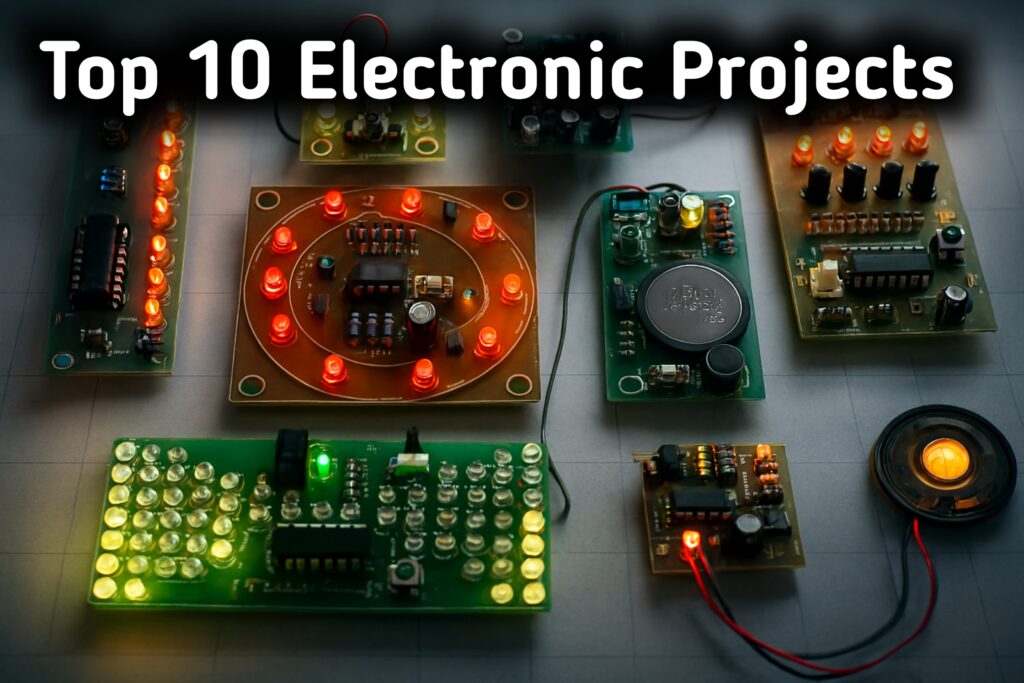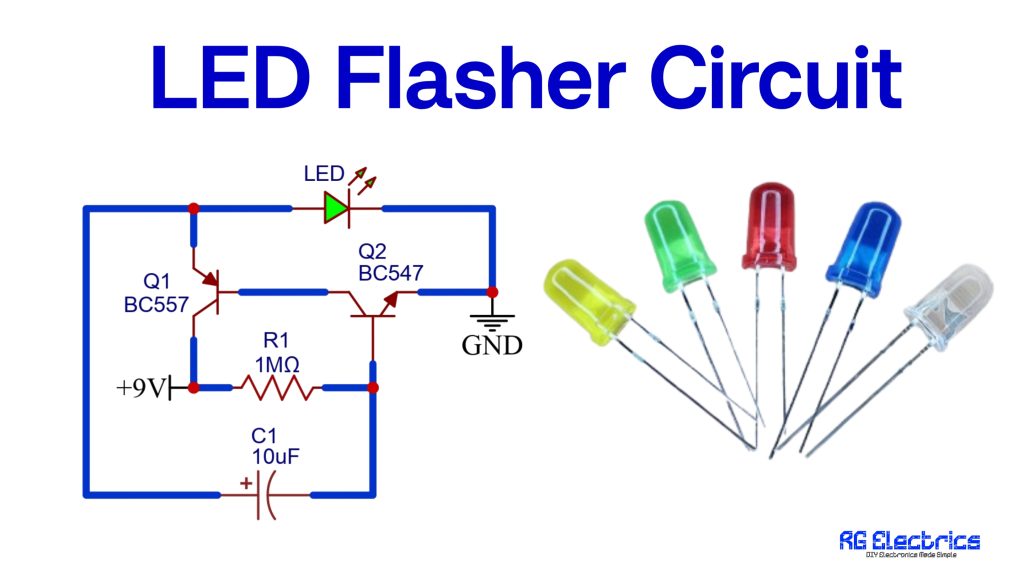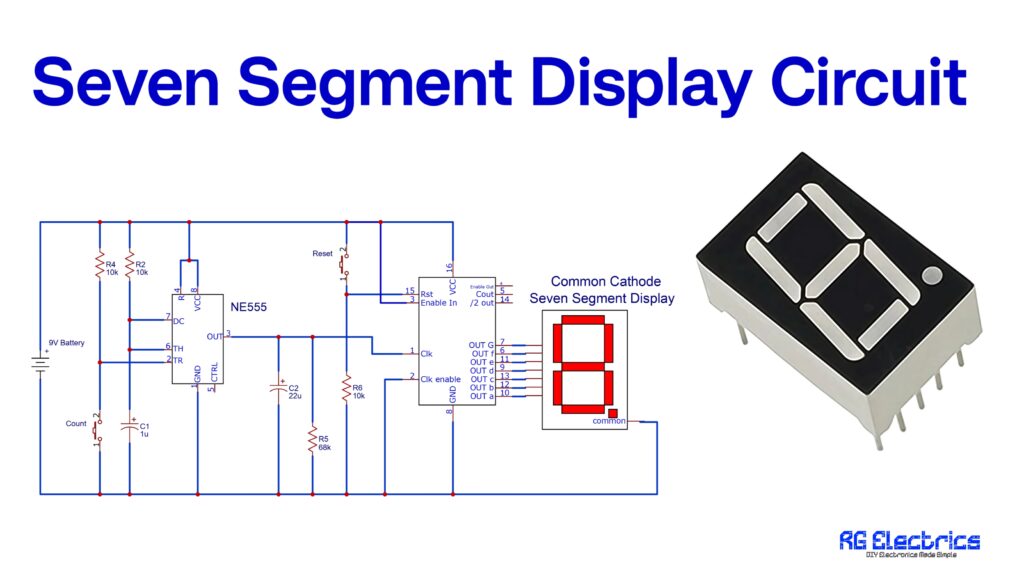Table of Contents
Introduction
The LM3876 is a high-performance audio power amplifier capable of delivering up to 60W of output power with low distortion and excellent sound quality. It is widely used in home audio systems, DIY speaker projects, and professional sound applications. This amplifier is known for its robust thermal protection, low Total Harmonic Distortion (THD), and superior audio clarity. With a simple yet efficient circuit design, it offers excellent frequency response and dynamic range, making it an ideal choice for audiophiles and sound engineers. Additionally, the LM3876 includes features such as short-circuit protection and mute functionality, ensuring safe and stable operation. This article provides a detailed explanation of the LM3876 amplifier circuit, its components, working principle, and applications.

Components List
Below is a table listing the key components used in the LM3876 amplifier circuit:
| Component | Value/Specification |
|---|---|
| IC | LM3876 |
| Resistors | R1: 1kΩ, R2: 22kΩ, R3: 1kΩ, R4: 18kΩ, R5: 27kΩ, R6: 2.7Ω, R7: 10Ω |
| Capacitors | C1: 220pF, C2: 22μF, C3: 220μF, C4: 0.1μF, C5: 22μF, C6: 220μF, C7: 0.1μF, C8: 0.1μF |
| Inductor | L1: 0.7μH |
| Speaker | 4Ω – 8Ω |
| Power Supply | +36V, -36V |
| Fuse | 2A |
| Switch | S1: Mute |
LM3876 Pinout

Below is the pin configuration of the LM3876 audio amplifier IC:
| Pin Number | Name | Description |
|---|---|---|
| 1 | V+ | Positive power supply (+36V) |
| 2 | NC | Not connected |
| 3 | OUTPUT | Amplified audio output |
| 4 | V- | Negative power supply (-36V) |
| 5 | NC(†) | Not connected (internal) |
| 6 | NC | Not connected |
| 7 | GND | Ground reference |
| 8 | MUTE | Mute control (active when low) |
| 9 | VIN- | Inverting audio input |
| 10 | VIN+ | Non-inverting audio ience |
| 11 | NC | Not connected |
Circuit Diagram

Circuit Overview
The LM3876 amplifier circuit is designed to operate with a dual power supply (+36V and -36V), ensuring a symmetrical power output for better performance. The amplifier drives speakers with impedance ranging from 4Ω to 8Ω.
Key Components
- LM3876 Amplifier IC: The core component responsible for audio amplification with low Total Harmonic Distortion (THD).
- Power Supply: The circuit operates on a +36V and -36V dual power supply, ensuring stable and efficient operation.
- Input Stage:
- R1 (1kΩ) and R2 (22kΩ): Set the input impedance.
- C1 (220pF): Filters high-frequency noise.
- Feedback Network:
- R4 (18kΩ) and R5 (27kΩ): Define the amplifier’s gain and overall response.
- Decoupling Capacitors:
- C3 (220μF), C4 (0.1μF), C6 (220μF), and C7 (0.1μF): Stabilize the power supply and remove noise.
- Output Stage:
- L1 (0.7μH), R7 (10Ω), and C8 (0.1μF): Prevent oscillations and improve speaker performance.
Working Principle
- Signal Input: The input audio signal enters through R1 and R2, which set the required impedance for proper signal handling.
- Amplification: The LM3876 amplifies the signal based on the feedback loop defined by R4 and R5.
- Power Management: The +36V and -36V rails, along with decoupling capacitors, ensure stable power delivery and noise-free amplification.
- Speaker Output: The amplified signal is transmitted to the speaker via L1, R7, and C8, ensuring smooth and distortion-free sound output.
Features of LM3876 Amplifier
- High output power of up to 60W.
- Low Total Harmonic Distortion (THD) for clear audio reproduction.
- Mute functionality controlled using switch S1.
- Built-in thermal shutdown and short-circuit protection.
- Wide frequency response for superior sound quality.
Applications
The LM3876 amplifier is highly versatile and finds application in various audio systems, including:
- Home Audio Systems
- DIY Speaker Projects
- Subwoofer Amplifiers
- Professional Sound Systems
- Guitar and Musical Instrument Amplifiers
Conclusion
The LM3876 amplifier circuit is an excellent choice for DIY enthusiasts and audio professionals seeking a high-power, low-distortion amplifier. Its simple yet efficient design, coupled with safety features, makes it a reliable option for various audio applications. Whether for home audio, professional setups, or experimental projects, this circuit delivers high-quality sound output with ease.















